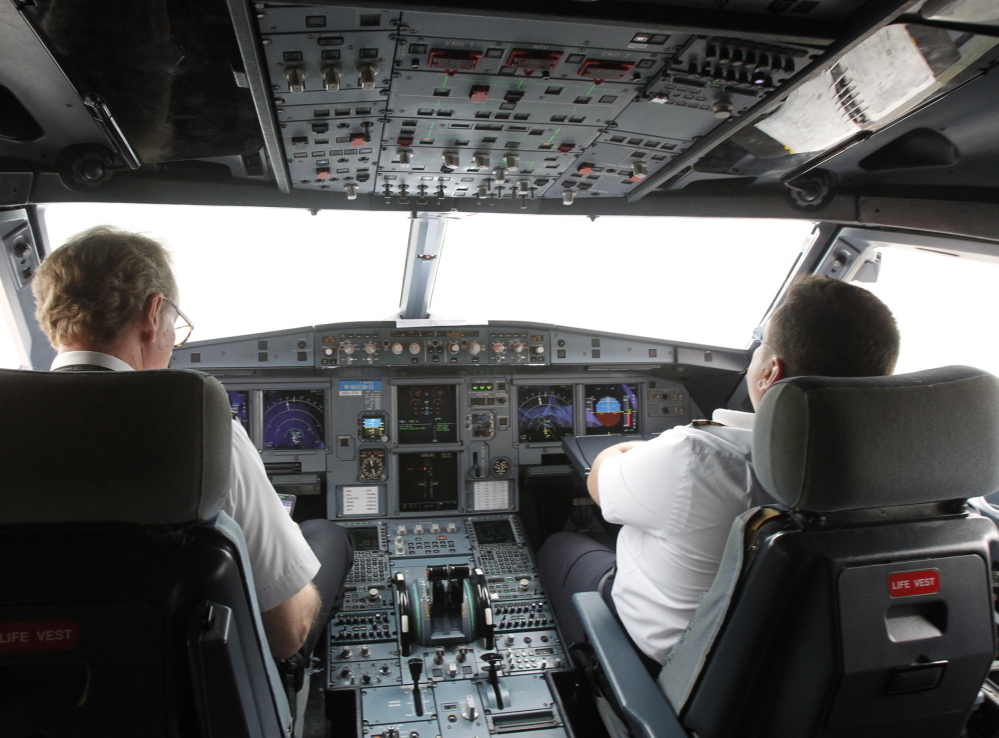WASHINGTON — The nation’s regional airlines are having trouble hiring enough pilots, the government says, suggesting one reason may be that they simply don’t pay enough.
A pool of qualified pilots is available, but it’s unclear whether they are willing to work for low entry-level wages, the Government Accountability Office said in a report released Friday.
One key economic indicator supports the emergence of a shortage, something regional airlines have complained of and point to as a reason for limiting service to some small communities. But two other indicators suggest the opposite is true, GAO said. Also, two studies reviewed by the GAO “point to the large number of qualified pilots that exist, but may be working abroad, in the military or in another occupation, as evidence that there is adequate supply,” the report said.
The U.S. airline industry will need to hire 1,900 to 4,500 new pilots annually over the next 10 years due to an expected surge in retirements of pilots reaching age 65 and increased demand for air travel, the report said.
Eleven out of 12 regional airlines failed to meet their hiring targets for entry-level pilots last year, the report said. However, no major airlines were experiencing problems finding pilots.
Regional carriers account for about half of all domestic airline flights. One big concern is that communities served only by regional airlines will see their service reduce or eliminated. Five regional airlines told the GAO they are already limiting service because of a pilot shortage.
Major airlines generally pay significantly higher salaries than regional carriers and frequently hire pilots from regionals. The average starting salary for first officers, also called co-pilots, at regional airlines is $22,400 a year, according to the Air Line Pilots Association.
Earlier this month, Wyoming-based Great Lakes Airlines ended service in a handful of small towns, citing a dearth of qualified pilots. The pilots association says Great Lakes pays newly hired first officers $16,500 a year.
The unemployment rate for professional pilots is very low, only 2.7 percent. That would normally indicate a shortage, but that may not be the case, GAO said. Average professional pilot salaries went down 9.5 percent from 2000 to 2012, while the number of pilots employed went up 12 percent. Both trends are inconsistent with a shortage, the report said.
At the same time, pilot qualifications have been ramped up. Both captains and first officers need at least 1,500 hours of flying experience, although there are some exceptions. First officers used to need just 250 hours.
The new regulations stem from an aviation safety law Congress passed more than three years ago following the 2009 crash of a regional airliner near Buffalo, N.Y., that was blamed on pilot error. All 49 people on board and a man on the ground were killed. An investigation revealed that the first officer had been paid only about $16,000 the previous year, her first year at the airline. The captain was earning about $63,000.
Classroom work and flight training in a 4-year program to qualify for commercial flying can cost well in excess of $100,000. Pilot schools GAO interviewed reported fewer students entering their programs because of the disparity between high education costs and low entry-level pay at regional airlines.
Send questions/comments to the editors.



Success. Please wait for the page to reload. If the page does not reload within 5 seconds, please refresh the page.
Enter your email and password to access comments.
Hi, to comment on stories you must . This profile is in addition to your subscription and website login.
Already have a commenting profile? .
Invalid username/password.
Please check your email to confirm and complete your registration.
Only subscribers are eligible to post comments. Please subscribe or login first for digital access. Here’s why.
Use the form below to reset your password. When you've submitted your account email, we will send an email with a reset code.